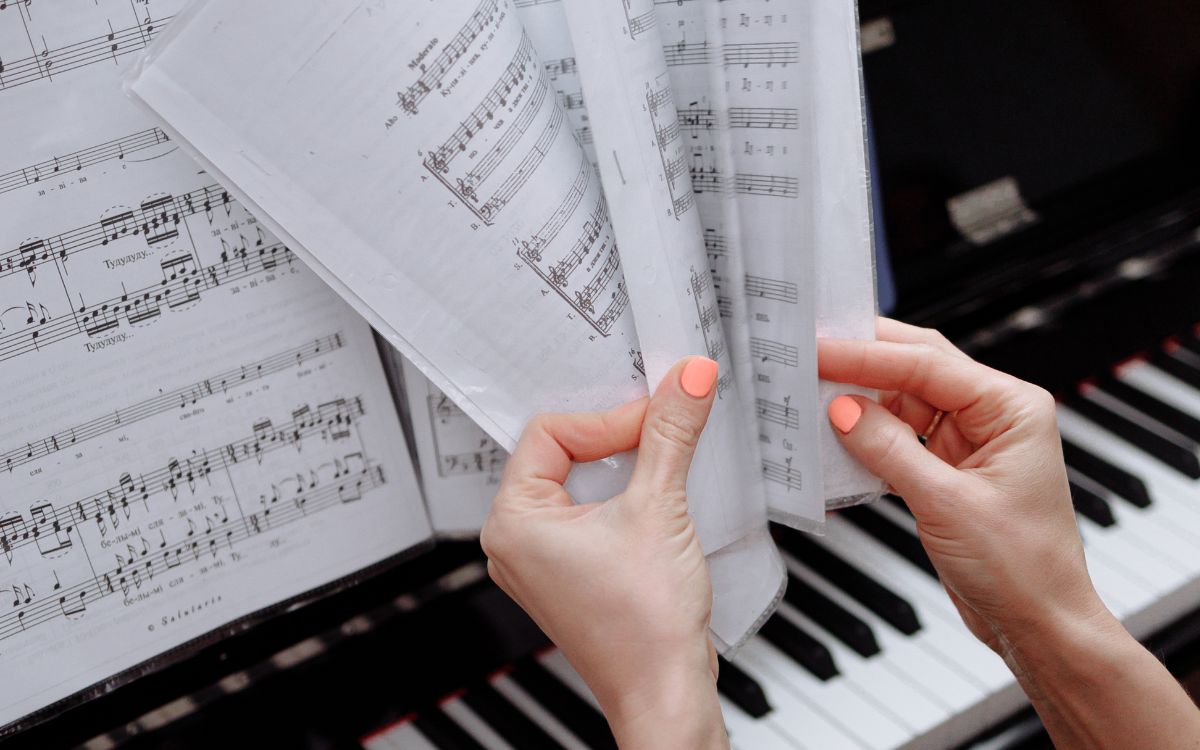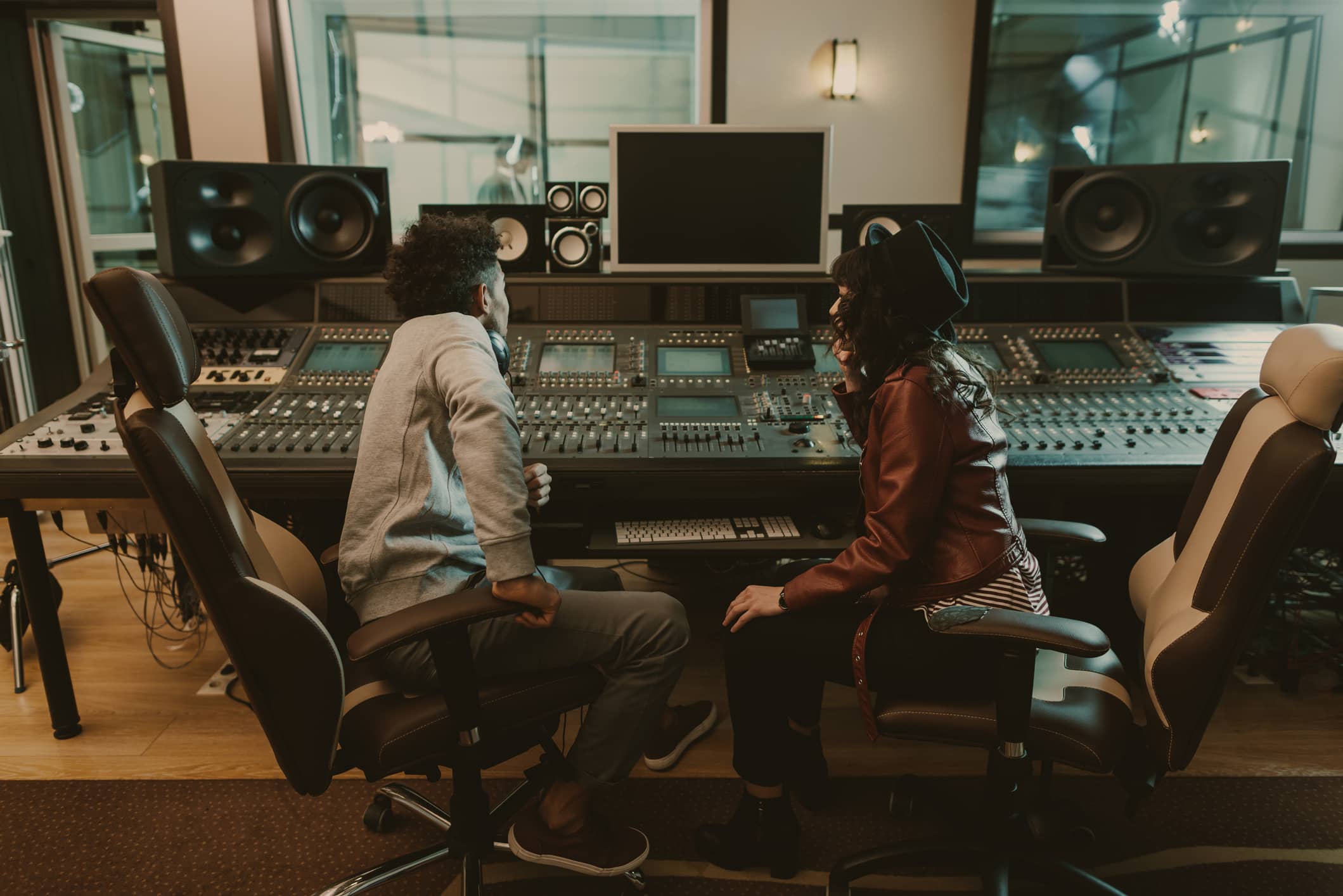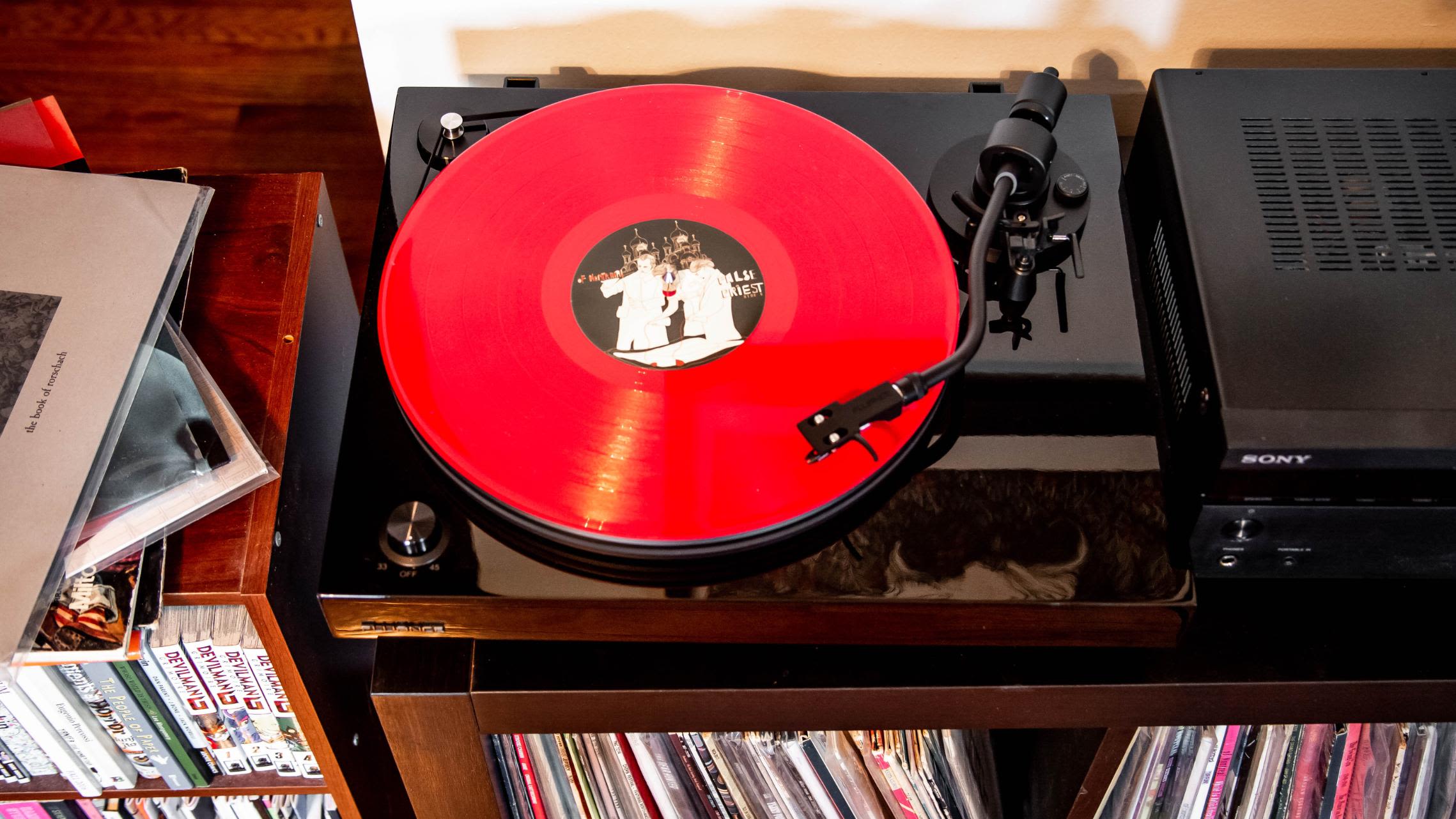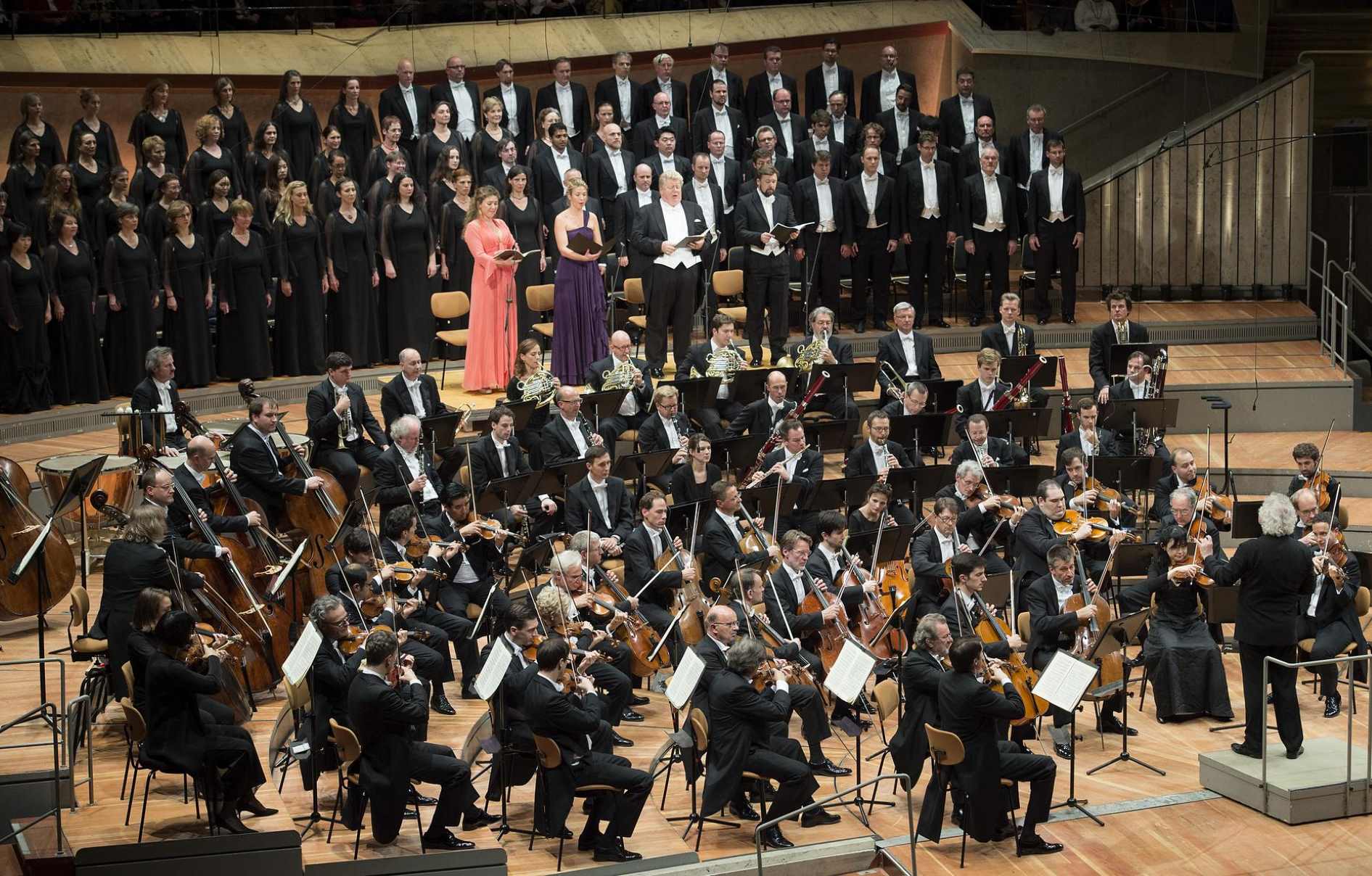Home>Instruments>Synthesizer>What Is The Difference Between Voice Synthesizer And Auto-Tune


Synthesizer
What Is The Difference Between Voice Synthesizer And Auto-Tune
Published: December 11, 2023
Discover the key differences between a voice synthesizer and auto-tune. Learn how synthesizers produce sounds while auto-tune corrects pitch.
(Many of the links in this article redirect to a specific reviewed product. Your purchase of these products through affiliate links helps to generate commission for AudioLover.com, at no extra cost. Learn more)
Table of Contents
Introduction
In the world of music production and performance, there are various tools and technologies that can enhance and manipulate the human voice. Two such tools that have gained significant popularity are voice synthesizers and Auto-Tune. While both of these technologies are used to modify and manipulate vocals, there are fundamental differences between them. Understanding these differences is crucial for anyone interested in audio production or the music industry.
A voice synthesizer, as the name suggests, is a device or software that synthesizes or generates artificial vocal sounds. It mimics the human voice by creating electronic signals that are processed and manipulated to produce various tones and pitches. On the other hand, Auto-Tune is a plugin or software that corrects pitch in vocal recordings. It automatically adjusts the pitch of a vocal performance to bring it in tune with the desired key or musical scale.
While both voice synthesizers and Auto-Tune are used in audio production, they serve different purposes and have distinct functionalities. In this article, we will delve into the workings of voice synthesizers and Auto-Tune, discuss the key differences between them, explore their applications, and weigh the pros and cons of each technology.
Meaning and Purpose
A voice synthesizer, also known as a vocal synthesizer or vocoder, is a tool used to generate artificial vocal sounds. It takes input signals, such as spoken words or musical notes, and processes them to produce synthesized or computer-generated vocal sounds. The purpose of a voice synthesizer is to imitate or simulate human speech or singing.
Voice synthesizers have been used in various musical genres, from electronic music to pop and rock. They allow producers and musicians to create unique, robotic, or futuristic vocal effects that enhance the overall sound of a track. Additionally, they are often employed in live performances to add a dynamic and experimental edge to a singer’s voice.
On the other hand, Auto-Tune is primarily used for pitch correction. It is a real-time pitch correction software that automatically adjusts the pitch of a vocal performance to bring it in tune with the desired key or musical scale. Auto-Tune was originally designed to correct minor pitch discrepancies in vocal recordings but has since become a widely used tool for creating intentional pitch distortions and exaggerated vocal effects.
The purpose of Auto-Tune is to achieve a perfect or desired pitch in vocal recordings, ensuring that the vocals are in tune with the rest of the music. It can be used subtly to correct slight pitch inaccuracies or intentionally to create the distinctive Auto-Tune sound popularized in contemporary pop music.
While both voice synthesizers and Auto-Tune are used to manipulate vocals, their fundamental purposes and applications differ. Voice synthesizers focus on generating artificial vocal sounds, allowing for creative experimentation and unique vocal effects. Auto-Tune, on the other hand, is primarily used for pitch correction and has become synonymous with a specific vocal style.
How Voice Synthesizer Works
Voice synthesizers work by using a combination of electronic circuits and software algorithms to generate artificial vocal sounds. The process involves several steps:
1. Input Signal: The voice synthesizer takes an input signal, which can be spoken words, musical notes, or any other audio source. This input signal serves as the basis for creating the synthesized vocal sounds.
2. Analysis: The input signal is analyzed to identify and extract important characteristics such as pitch, duration, and formants. This analysis helps the synthesizer understand the nuances of the input signal and replicate them in the synthesized output.
3. Voice Model: The synthesizer utilizes a voice model, which is a pre-recorded set of vocal sounds or speech samples. This voice model represents the characteristics of a specific human voice, such as its tonal qualities and pronunciation.
4. Synthesis: Using the input signal analysis and the voice model, the synthesizer generates synthetic vocal sounds. It does this by manipulating the voice model and modifying the parameters according to the characteristics of the input signal. This process involves adjusting pitch, shaping the vocal tone, and adding effects to create the desired synthesized output.
5. Sound Output: The synthesized vocal sounds are then converted into audio signals and sent to an output device, such as speakers or headphones. The output can be further processed or mixed with other audio elements to create a complete musical composition.
Voice synthesizers can vary in complexity, from simple hardware devices with limited functionality to advanced software plugins with extensive customization options. They often allow users to manipulate various parameters such as pitch, formant shaping, vibrato, and breathiness to achieve specific vocal effects.
Overall, voice synthesizers give musicians and producers the ability to create synthetic vocal sounds, experiment with unique vocal effects, and add an element of creativity and uniqueness to their music.
How Auto-Tune Works
Auto-Tune is a real-time pitch correction software that has become a ubiquitous tool in the music industry. It works by analyzing the pitch of a vocal performance and making automatic adjustments to correct any pitch inaccuracies. Here’s a step-by-step breakdown of how Auto-Tune works:
- Analysis: Auto-Tune analyzes the incoming audio signal and detects the pitch of each note or vocal element. It breaks down the signal into individual segments.
- Pitch Correction: After analyzing the pitch, Auto-Tune compares it to the desired pitch or musical scale. If any pitch discrepancies are detected, Auto-Tune automatically corrects them by adjusting the pitch of the vocal performance.
- Correction Methods: Auto-Tune offers different correction methods, including the classic “Hard” mode, which corrects pitch inaccuracies abruptly, and the more transparent “Flex-Tune” mode, which gives a natural-sounding pitch correction. Users can also adjust parameters like the retune speed for more control over the correction process.
- Real-Time Processing: Auto-Tune performs these pitch corrections in real-time, meaning it instantly adjusts the pitch of the vocal performance as the sound is being processed and heard. This allows artists and producers to hear the corrected pitch immediately while recording or performing.
- Additional Features: Besides pitch correction, Auto-Tune offers additional features such as formant correction, which preserves the vocal character even when the pitch is adjusted, and graphical editing interfaces for precise control over pitch and timing adjustments.
- Effect Usage: In addition to its primary function of pitch correction, Auto-Tune is often used as an effect. By intentionally exaggerating pitch corrections, especially in the case of extreme or rapid adjustments, Auto-Tune creates the distinctive robotic or artificial vocal sound that has become synonymous with the technology.
Auto-Tune has revolutionized the music industry by allowing artists and producers to achieve precise pitch correction in vocal performances. It has become a defining characteristic of contemporary pop music, with its distinctive sound being embraced as a stylistic choice rather than just a corrective tool.
Key Differences Between Voice Synthesizer and Auto-Tune
Voice synthesizers and Auto-Tune may both involve the manipulation of vocals, but they have distinct differences in their purpose, functionality, and application. Here are the key differences between voice synthesizers and Auto-Tune:
- Purpose: The core purpose of a voice synthesizer is to generate artificial vocal sounds. It mimics the human voice and allows for creative experimentation and unique vocal effects. On the other hand, Auto-Tune is primarily used for pitch correction. Its main function is to automatically adjust and correct the pitch of a vocal performance to achieve perfect or desired tuning.
- Generation vs. Correction: Voice synthesizers generate artificial vocal sounds, whereas Auto-Tune corrects the pitch of existing vocal performances. Voice synthesizers create new vocal tones and textures from scratch, while Auto-Tune focuses on enhancing and refining the pitch of the original vocals.
- Realism vs. Transparency: Voice synthesizers often produce distorted or robotic vocal sounds intentionally, allowing for creative exploration and experimentation. Auto-Tune, when used for pitch correction, aims for transparency, making the adjustments seamless and natural-sounding, without altering the overall character of the vocals.
- Flexibility: Voice synthesizers offer a wide range of customization options, allowing users to manipulate various parameters such as pitch, formants, and effects. This flexibility enables users to create unique and creative vocal textures. Auto-Tune, although it offers customizability in terms of correction methods and parameters, is primarily focused on achieving precise pitch correction.
- Applications: Voice synthesizers are often used in electronic music, pop, and experimental genres to create futuristic or robotic vocal effects. They can be employed in both studio recordings and live performances. Auto-Tune, on the other hand, is widely used in various genres, especially in modern pop music, to achieve pitch-perfect and polished vocals.
- Artistic Style: The use of voice synthesizers can be a distinctive artistic choice, as it adds a unique and futuristic flavor to a musical composition. In contrast, the use of Auto-Tune, especially when applied noticeably, has become associated with a specific vocal style and is often used for dramatic effect or as a recognizable characteristic in contemporary pop music.
While both voice synthesizers and Auto-Tune are valuable tools used in the manipulation of vocals, understanding their differences is essential when it comes to deciding which tool best suits the desired artistic vision and purpose.
Applications of Voice Synthesizer
Voice synthesizers have a wide range of applications in the world of music production and performance. They are used by musicians, producers, and sound designers to create unique vocal effects and add a touch of creativity to their compositions. Here are some common applications of voice synthesizers:
- Electronic Music: Voice synthesizers are extensively used in electronic music genres like EDM (Electronic Dance Music), synthpop, and glitch. They allow artists to create futuristic and robotic vocal sounds that complement the electronic elements of the music.
- Experimental Music: Voice synthesizers are a staple in experimental and avant-garde music, where artists push the boundaries of traditional music. They enable musicians to explore new vocal textures and create unconventional vocal effects that add an element of surprise and innovation to their compositions.
- Soundtracks and Film Scores: Voice synthesizers find their place in soundtracks and film scores, especially for science fiction or futuristic-themed movies. They can produce otherworldly vocal sounds or even emulate the voices of non-human characters, enhancing the overall atmospheric and cinematic experience.
- Live Performances: Voice synthesizers are often used in live performances to enhance and augment the vocals. Musicians and singers can process and manipulate their voices in real-time, creating unique vocal textures and effects during live shows. This adds a dynamic and experimental element to the performance.
- Artistic Expression: Voice synthesizers provide artists with a platform for artistic expression. They can use the technology to create their own signature vocal style or explore unconventional vocal territories. This allows them to set themselves apart from traditional vocal performances and express their creativity in new and exciting ways.
Overall, voice synthesizers are a versatile tool that allows for a wide range of artistic expression and experimentation. They find their place in various musical genres, live performances, and audiovisual productions, adding a futuristic and creative touch to the world of music and beyond.
Applications of Auto-Tune
Auto-Tune has become a versatile tool widely used in the music industry for its pitch correction capabilities. It has found applications in various genres and has become a recognizable characteristic in modern pop music. Here are some common applications of Auto-Tune:
- Pitch Correction: The primary application of Auto-Tune is to correct pitch in vocal recordings. It is used to fine-tune vocal performances, ensuring that the vocals are perfectly in tune with the desired key or musical scale. This helps to achieve a polished and professional sound in studio recordings.
- Enhancing Performance: Auto-Tune is often used to enhance the quality of a vocal performance. It can correct minor pitch discrepancies that may occur during live recordings or performances, ensuring a more consistent and accurate delivery of the vocals.
- Creating Vocal Effects: Auto-Tune is not limited to subtle pitch correction. It can also be used creatively to create vocal effects. By intentionally exaggerating pitch corrections, artists can achieve the distinctive Auto-Tune sound popularized in contemporary pop music. This effect is often used as a stylistic choice to add a futuristic or robotic touch to the vocals.
- Achieving a Specific Vocal Style: Auto-Tune has become synonymous with a particular vocal style that is characterized by its precise and polished sound. Many artists use Auto-Tune as an artistic tool to define their signature vocal style and to achieve a consistent sound across their recordings.
- Experimentation and Innovation: Auto-Tune is also used by artists and producers to push the boundaries of traditional vocal performance. By applying creative pitch adjustments and experimenting with different effects, they can create unique and innovative vocal textures that stand out in the music landscape.
- Live Performances: Auto-Tune is often employed in live performances to ensure pitch accuracy. Artists can use real-time Auto-Tune processors to correct pitch inaccuracies on the fly, allowing for a more professional and precise vocal delivery on stage.
Despite its initial purpose of pitch correction, Auto-Tune has evolved into a powerful tool capable of producing unique vocal effects and allowing artists to explore new vocal territories. It has become an integral part of modern music production, enabling artists to achieve a specific vocal style while offering endless possibilities for creative experimentation and innovation.
Pros and Cons of Voice Synthesizer
Voice synthesizers offer a range of benefits and drawbacks, depending on the user’s perspective and intended application. Let’s explore the pros and cons of using voice synthesizers:
Pros:
- Creative Possibilities: Voice synthesizers provide musicians, producers, and sound designers with endless creative possibilities. They allow for the creation of unique and futuristic vocal sounds that can add a distinctive touch to musical compositions.
- Experimentation and Innovation: Voice synthesizers encourage experimentation and push the boundaries of traditional vocal performances. Artists can explore unconventional vocal textures and effects, opening new avenues for artistic expression and innovation.
- Flexibility and Customization: Voice synthesizers offer a wide range of customization options, allowing users to manipulate various parameters such as pitch, formants, and effects. This flexibility allows artists to tailor the synthesized vocals to their specific needs and artistic vision.
- Live Performance Potential: Voice synthesizers can be used in live performances, adding an element of creativity and experimentation to the stage. Musicians and singers can process and manipulate their voices in real-time, creating dynamic and unique vocal effects during their live shows.
- Accessibility: Voice synthesizers make it possible for those with limited vocal abilities or speech impairments to create music using synthesized vocals. This promotes inclusivity and provides opportunities for individuals who may not have been able to express themselves vocally in the past.
Cons:
- Artificial Sound: While voice synthesizers can be used to create unique vocal effects, the synthesized vocals may sound artificial or robotic, which may not be desirable in certain musical styles or for all listeners.
- Emotional Expression Limitations: Voice synthesizers may not capture the nuances and emotional depth that human vocals can convey. The synthesized vocals can lack the subtle inflections, dynamics, and nuances that make human vocals expressive and relatable.
- Learning Curve: Using voice synthesizers effectively requires a learning curve. Understanding the various parameters and settings, as well as the technical aspects of synthesis, can take time and practice to master.
- Overuse and Cliché: Due to its popularity, the use of voice synthesizers can become cliché or overused if not applied with creativity and originality. It is essential to use voice synthesizers judiciously to avoid sounding generic or repetitive.
- Dependency on Technology: Voice synthesizers rely on technology and software, which can be subject to technical issues or limitations. Users may experience challenges related to software compatibility, hardware requirements, or updates.
Overall, voice synthesizers provide a wide range of creative possibilities, allowing artists to explore new vocal territories. However, they also come with limitations and challenges that need to be considered and overcome to fully leverage their potential.
Pros and Cons of Auto-Tune
Auto-Tune has become a popular tool in the music industry, offering both advantages and disadvantages. Let’s explore the pros and cons of using Auto-Tune:
Pros:
- Pitch Correction: The primary benefit of Auto-Tune is its ability to correct pitch inaccuracies in vocal performances. It ensures that the vocals are in tune with the desired key or musical scale, resulting in a polished and professional sound.
- Enhanced Vocal Performance: Auto-Tune can enhance the overall quality of a vocal performance by correcting minor pitch discrepancies. It helps to achieve a more consistent and accurate delivery of the vocals, elevating the overall musical production.
- Time and Cost Efficiency: Auto-Tune can save significant time and resources in the studio. Instead of spending hours retaking vocal parts, artists can make necessary pitch corrections quickly and efficiently, reducing the need for extensive re-recording sessions.
- Creative Vocal Effects: While primarily used for pitch correction, Auto-Tune can also be used as a creative tool. By intentionally exaggerating pitch corrections, artists can achieve unique vocal effects synonymous with the distinctive Auto-Tune sound popularized in contemporary pop music.
- Live Performance Assistance: Auto-Tune processors can be used in live performances, ensuring pitch accuracy on stage. It allows artists to deliver a more professional and precise vocal performance in real-time, enhancing the overall experience for the audience.
Cons:
- Overuse and Artificial Sound: Excessive use of Auto-Tune can lead to an unnatural and artificial vocal sound, detracting from the authenticity and emotion of a performance. It can be perceived as a loss of human connection and expression in the vocals.
- Homogenized Sound: The pervasive use of Auto-Tune in contemporary music has led to a homogenized vocal sound. Many artists rely heavily on Auto-Tune, resulting in a lack of diversity and individuality in vocal styles.
- Dependency on Technology: Auto-Tune relies on technology and software, making it susceptible to technical issues or limitations. Software glitches, compatibility issues, or hardware failures could impact the workflow or availability of Auto-Tune in certain situations.
- Limited Dynamic Range: Auto-Tune tends to homogenize the dynamics of a vocal performance, reducing the natural variations in pitch and volume. This can result in a loss of the subtle nuances and emotional expressions that are intrinsic to human vocals.
- Loss of Authenticity: Critics argue that excessive use of Auto-Tune can lead to a loss of authenticity in music. It can mask imperfections and diminish the uniqueness and individuality of an artist’s voice, potentially diluting their artistic identity.
Auto-Tune offers precise pitch correction and the potential for creative vocal effects, saving time and resources in the studio. However, its widespread use has led to a loss of authenticity and individuality in vocal performances. It is important for artists and producers to use Auto-Tune judiciously and preserve the emotional and expressive qualities that make human vocals captivating.
Conclusion
Voice synthesizers and Auto-Tune both play significant roles in the music industry, offering unique capabilities for vocal manipulation and enhancement. While voice synthesizers focus on generating artificial vocal sounds, Auto-Tune is primarily used for pitch correction. Understanding the key differences between the two technologies is essential for producers, musicians, and enthusiasts alike.
Voice synthesizers allow for creative experimentation and innovation, offering endless possibilities for sonic exploration. They find applications in various genres, from electronic and experimental music to film soundtracks. With voice synthesizers, artists can create futuristic and robotic vocal effects that add a distinctive touch to their compositions.
On the other hand, Auto-Tune excels in achieving precise pitch correction in vocal recordings. It enhances vocal performances by correcting minor pitch discrepancies and ensuring that vocals are perfectly in tune. Auto-Tune has become a recognizable characteristic in modern pop music, with its unique vocal effects and polished sound.
While voice synthesizers and Auto-Tune have their benefits, they also come with limitations. Voice synthesizers can produce artificial or robotic sounds, which may not be suitable for all musical styles. Auto-Tune, if overused, can diminish the authentic qualities of a vocal performance, leading to a homogenized sound.
Ultimately, the choice between voice synthesizers and Auto-Tune depends on the artistic vision and desired outcome. Voice synthesizers offer creative possibilities and artistic expression, while Auto-Tune provides precise pitch correction and polished vocals.
Artists, producers, and sound designers should approach both technologies with a balance of creativity and restraint. Whether it’s using voice synthesizers to push the boundaries of vocal exploration or employing Auto-Tune for subtle pitch correction or intentional vocal effects, the goal is to enhance the overall musical experience and convey the intended emotion and expression.
By understanding the strengths and limitations of voice synthesizers and Auto-Tune, music creators can make informed decisions and apply these tools effectively to bring their artistic vision to life.











